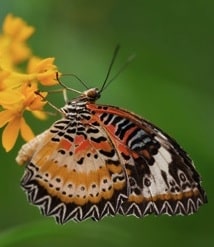Bugs (insects, to be more scientifically correct) are often considered foes in the garden and landscape. But they can also be gifts to the garden, providing natural control of damaging insects and organisms, pollinating our plants and providing food for birds and other animals.
Because insects are an important part of your ecosystem, accept their presence and embrace their benefits.
The first step in doing this is to figure out if the bugs you are seeing are really a threat. Try to make a proper identification of any insect you see.
Help in doing so is available in books and online and through diagnostic services and the use of other local experts in your area.
The truth is that eliminating the bad bugs is almost impossible. But you can establish a proper balance of insect populations.
How to create a balance:
1. Give the good guys plenty of help by making sure you have lots of woody plants (trees and shrubs) in the garden, which tend to increase biodiversity.
2. Remove as many invasive trash plants as possible and replace these with plants that provide food and nectar to insects and birds.
3. Use plants that are naturally resistant to pests.
These and other tactics are part of a pest control plan known as integrated pest management (IPM). IPM makes use of all pest control strategies—from chemical to mechanical to biological controls—to restrain the bad guys (be they insects, diseases or weeds) while nurturing the good guys. In addition to being environmentally sound, using IPM can also reduce the cost of pest control in the garden.

How to use IPM:
The basic premise of IPM is to use a series of pest management tools.
Among these are establishing thresholds for action (determining how many pests need to be present before some control method is used), monitoring and identifying pests (so you know your foe), preventing infestation (usually by making sure your plants and soils are healthy) and applying some control method if the pests become a threat.
Control Methods:
Control methods may be cultural (selecting the best sites and plants for your landscape and properly maintaining your plants), biological (employing natural enemies of pests), mechanical and physical (weeding, pruning or using traps and other devices to repel or capture pests) and chemical (using pesticides judiciously and according to label directions).
IPM strategies vary from region to region and guidelines can be obtained through Cooperative Extension offices and other state and federal organizations in your area. Using these strategies can make your life easier, save you money and even make your own little garden ecosystem more diverse and healthy.
For more care tips and garden advice, click here.
To browse the full Sunset Western Garden Collection, click here.
